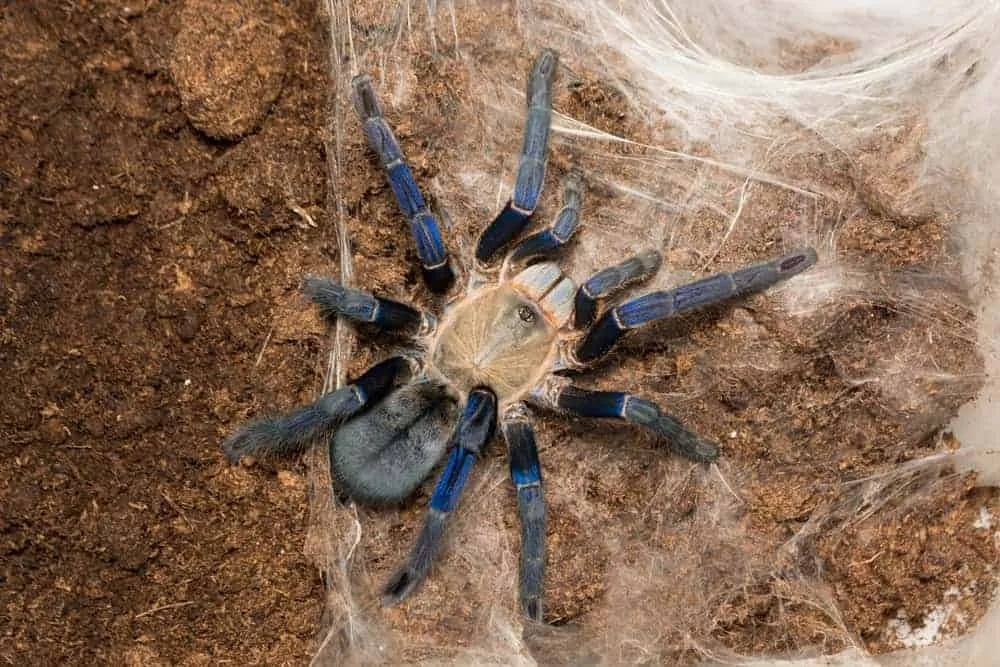What is the Cobalt Blue Tarantula?
The Cobalt Blue Tarantula (Cyaneopubescens) is a captivating species, renowned for its vibrant blue coloration, particularly on its legs. Native to the tropical forests of Myanmar and Thailand, this arboreal tarantula is a popular choice among experienced arachnid enthusiasts. They are known for their striking appearance and relatively fast growth rate. However, their care requires specific attention to ensure their well-being, particularly concerning their diet. This includes providing appropriate food sources that meet their nutritional needs and supports their overall health. Understanding their dietary requirements is fundamental for anyone interested in keeping these stunning creatures.
Cobalt Blue Tarantula Food Top 5 Picks (H2)
Selecting the right food is vital for a Cobalt Blue Tarantula’s health. A varied diet ensures they receive all the necessary nutrients to thrive. Here are the top 5 picks for feeding your Cobalt Blue Tarantula, with considerations for nutritional value, ease of feeding, and overall suitability for this fascinating species. Each food item provides different benefits, and a combination is often the best approach. Remember to always source your feeders from reputable suppliers to avoid parasites and ensure they are raised in a healthy environment, as this directly impacts your tarantula’s health. The following picks aim to provide a well-rounded diet.
Crickets
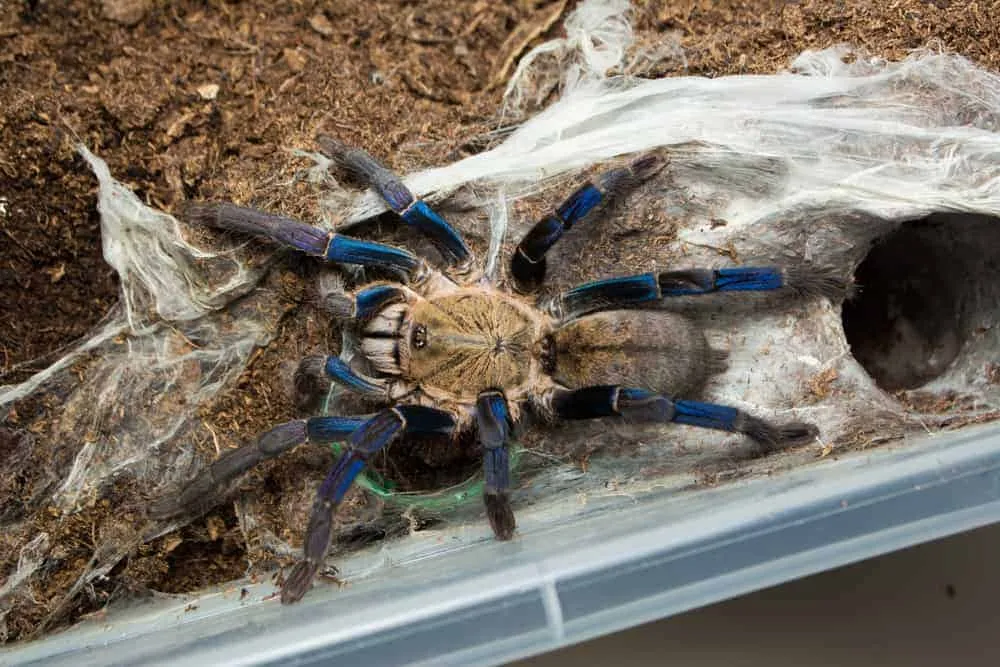
Crickets are a staple food for many tarantula species, and Cobalt Blues are no exception. They are readily available, relatively easy to manage, and provide a good source of protein. Crickets can be easily gut-loaded, which means feeding them nutritious foods before offering them to your tarantula, thereby enhancing their nutritional value. This practice helps provide your tarantula with a more balanced meal. However, be mindful of the crickets’ size; they should be no larger than the tarantula’s body to avoid any potential issues during feeding. Excessively large crickets can pose a threat to the tarantula by potentially injuring them or leading to a refusal to eat.
Nutritional Value of Crickets
Crickets primarily offer a good source of protein, which is crucial for growth and development in tarantulas. They also contain chitin, a fiber that aids in digestion. The nutritional profile can be enhanced by gut-loading the crickets with nutritious foods such as vegetables, fruits, and specialized cricket food. This practice significantly boosts the vitamin and mineral content of the crickets, providing a more complete diet for your Cobalt Blue Tarantula. Gut-loading ensures your tarantula receives a wider range of nutrients, promoting better health and vibrancy. Proper gut-loading can make crickets a highly beneficial part of their diet.
Feeding Crickets to Your Tarantula
Feeding crickets is a straightforward process. Place a few appropriately sized crickets into the tarantula’s enclosure, typically at night, as tarantulas are nocturnal hunters. The number of crickets depends on the tarantula’s size and appetite; start with a couple and observe if they are consumed. Remove any uneaten crickets within 24 hours to prevent them from stressing the tarantula or causing harm. Regular feeding is generally every few days for juveniles, and less frequently for adults. Monitoring your tarantula’s feeding habits helps you adjust the amount and frequency of cricket offerings to maintain a healthy diet.
Mealworms
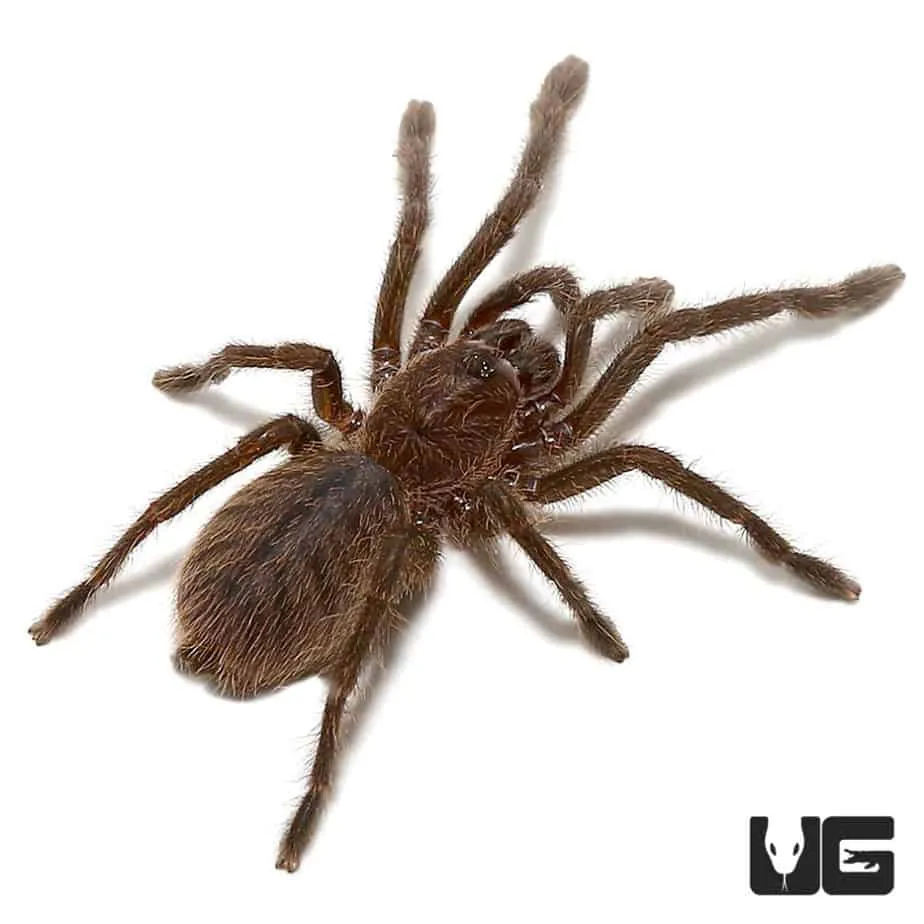
Mealworms are another readily available and convenient food source. They are easy to culture and store, making them a practical option for tarantula keepers. However, mealworms have a higher fat content compared to crickets, so they should be offered in moderation. Overfeeding mealworms can potentially lead to obesity, which may affect the overall health of your Cobalt Blue Tarantula. A varied diet, including other insects, is important to ensure the tarantula receives a balanced intake of nutrients. Mealworms serve as a good supplement but should not be the sole food source.
Mealworm Nutritional Information
Mealworms are a good source of protein and some fats. They also contain a moderate amount of chitin. However, their nutritional profile is less balanced than crickets. Mealworms tend to be higher in fat and lower in certain vitamins and minerals. Because of this, it’s important to supplement their diet with other feeders or gut-load the mealworms if you choose to use them. Proper gut-loading with vegetables and fruits can slightly improve their nutritional value. Regular monitoring of your tarantula’s condition is essential if mealworms form a significant part of their diet. Observing their weight and activity levels can help you determine if they are receiving a balanced diet.
How to Feed Mealworms
Feeding mealworms is simple. Place a few mealworms in the tarantula’s enclosure. If the tarantula consumes them readily, you can offer a few more. It is important to monitor the tarantula’s feeding habits to prevent overfeeding, as this can lead to health issues. Like with crickets, remove any uneaten mealworms within 24 hours to prevent them from burrowing and stressing the tarantula. The frequency of feeding will depend on the tarantula’s age and size; younger tarantulas may need to be fed more often than adults. Observe your tarantula’s body condition; if they appear overweight or sluggish, reduce the frequency and quantity of mealworms.
Roaches
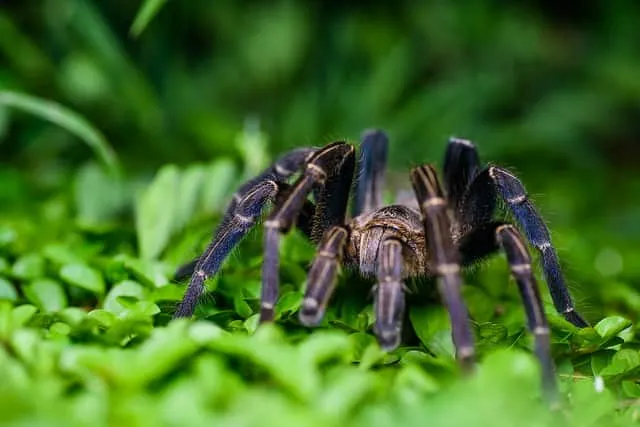
Roaches are highly nutritious and provide excellent food for tarantulas. They are relatively easy to breed and maintain, offering a sustainable food source. Roaches have a good protein-to-fat ratio and a higher meat content, making them a more nutritious option than some other feeders. Various roach species, such as Dubia roaches, are popular choices. They are less prone to escaping, making them a practical option. Roaches also tend to be active, stimulating the tarantula’s hunting instincts and providing enrichment. Roaches are a highly recommended food source for your Cobalt Blue Tarantula.
Roach Nutritional Benefits
Roaches are nutritionally superior to many other feeder insects. They have a higher protein content, a lower fat content, and a more favorable calcium-to-phosphorus ratio. This balanced nutritional profile supports the overall health and well-being of tarantulas. They also contain essential vitamins and minerals, contributing to healthy growth and molting. The high meat content of roaches offers increased nutritional value compared to feeders with a higher proportion of exoskeleton. Gut-loading roaches enhances their nutritional value even further, providing a well-rounded meal that promotes vibrant coloration and vitality.
Safely Feeding Roaches
Feeding roaches involves similar practices to other live feeders. Offer roaches that are appropriately sized for the tarantula. Remove any uneaten roaches promptly to prevent them from hiding or stressing the tarantula. Ensure the roaches are from a reliable source to minimize the risk of parasites or diseases. Introduce a few roaches into the enclosure and observe if the tarantula is eating them. The frequency of feeding varies based on the age and size of the tarantula; adjust the amount and frequency based on their appetite and body condition. Avoid overfeeding, as it can lead to health issues. Monitoring your tarantula’s feeding patterns helps you establish a healthy and balanced diet.
Superworms
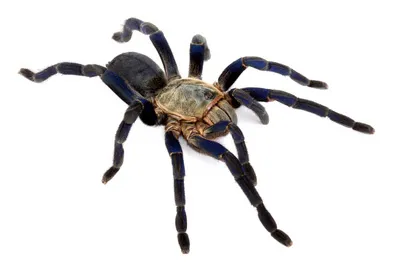
Superworms are another convenient food option, but like mealworms, they have a higher fat content. They are larger and more substantial than mealworms, providing a good source of bulk. Superworms are easy to store and breed. However, they should be fed in moderation to prevent obesity, which is a concern in tarantulas. A diet comprised solely of superworms is not recommended, as this may lead to nutritional imbalances. It is best to incorporate them into a varied diet alongside crickets and roaches for a balanced intake. Careful observation of the tarantula’s body condition is necessary when feeding superworms.
Nutritional Content of Superworms
Superworms, like mealworms, offer a good source of protein and some fats. They are relatively high in fat content, which means they should be offered in moderation. Superworms have a moderate chitin content. The nutritional value can be somewhat improved by gut-loading. However, the overall nutritional profile is less balanced compared to crickets or roaches. Supplementing superworms with other feeder insects helps provide a more complete diet, addressing potential deficiencies. Always consider the fat content when incorporating superworms into the diet. A balanced diet is vital for maintaining a healthy and vibrant Cobalt Blue Tarantula.
Feeding Superworms to Your Tarantula
Feeding superworms involves placing an appropriately sized worm in the tarantula’s enclosure. Because of their size, fewer superworms are generally offered than other feeders. Monitor the tarantula’s feeding habits to prevent overfeeding. Remove any uneaten superworms after a reasonable period. The feeding frequency should be adjusted based on the tarantula’s size and age. Younger tarantulas may require more frequent feedings, while adults can eat less often. Regular monitoring of the tarantula’s abdomen size and activity levels can help to ensure they are receiving the correct amount of food. Overfeeding can lead to obesity, which can negatively impact their health.
Hornworms
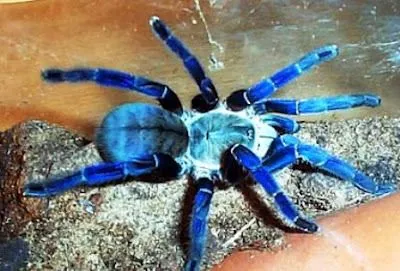
Hornworms are an excellent food source due to their high moisture content and nutritional benefits. They are soft-bodied and easy for tarantulas to consume. Hornworms are rich in calcium, essential for exoskeleton development and overall health. Their high moisture content helps to hydrate the tarantula. However, hornworms can be somewhat more expensive than other feeder insects, but their nutritional advantages make them worthwhile. They are also relatively easy to digest, which benefits tarantulas. Hornworms are a beneficial component of a diverse and balanced diet plan for your Cobalt Blue Tarantula.
Hornworm Nutritional Advantages
Hornworms offer several nutritional benefits that contribute to a healthy tarantula. They are high in moisture, which helps with hydration. They are also rich in calcium, supporting the development of a strong exoskeleton and overall bone health. The high moisture content can be particularly beneficial for tarantulas. Hornworms have a favorable calcium-to-phosphorus ratio, which is vital for calcium absorption. Their softness makes them easy for tarantulas to digest. This reduces the risk of digestive problems and promotes better nutrient absorption. Hornworms are a valuable addition to the tarantula’s diet, especially when considering their nutritional composition and benefits.
Best Way to Feed Hornworms
Feeding hornworms is similar to other live feeders. Place a few appropriately sized hornworms into the enclosure. The soft body of the hornworm makes it easy for the tarantula to eat. Monitor the tarantula’s response; if they readily consume the hornworms, you can offer a few more. Avoid overfeeding, as this can lead to health problems. Remove any uneaten hornworms within a reasonable timeframe to prevent them from stressing the tarantula. Adjust the feeding frequency and quantity based on the tarantula’s age, size, and appetite. Regularly assess your tarantula’s health to make informed decisions on its diet.
Factors Influencing Food Choices (H2)
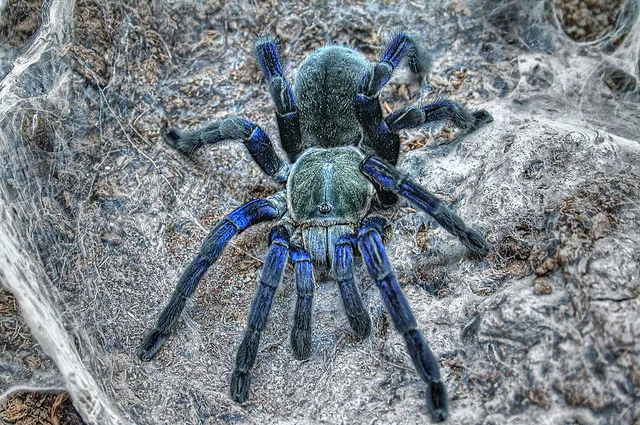
Several factors influence the choice of food for your Cobalt Blue Tarantula. It is important to consider these to ensure your tarantula receives a balanced diet. These factors encompass the tarantula’s size, age, and feeding frequency. Tailoring the diet to these elements will promote optimal health. The availability and ease of sourcing also play a part in choosing appropriate food items. A well-informed approach to feeding considers all these aspects, promoting the well-being of the tarantula.
Tarantula Size
The size of your Cobalt Blue Tarantula is a crucial factor. Younger tarantulas, often called slings, need smaller prey items, such as pinhead crickets or small mealworms. As they grow, the size of the prey should increase proportionally. Adults can handle larger feeders, such as adult crickets or roaches. Always ensure that the food is no larger than the tarantula’s body size to avoid potential feeding issues and injuries. The prey’s size impacts the tarantula’s ability to capture and consume food. Careful consideration of prey size based on the tarantula’s development stage is essential for successful feeding.
Tarantula Age
The age of your Cobalt Blue Tarantula also influences its dietary needs. Juvenile tarantulas have a higher metabolism and need to be fed more frequently. Young tarantulas undergo frequent molting, which requires sufficient nutrients to support growth. As they mature, the feeding frequency decreases. Adult tarantulas do not need to be fed as often; they may eat only a few times a week or less. Adjust feeding schedules according to the tarantula’s age and molting cycle. Monitoring the tarantula’s behavior and appetite helps determine appropriate feeding frequency. Careful attention to age-related dietary requirements contributes to healthy growth and development.
Feeding Frequency
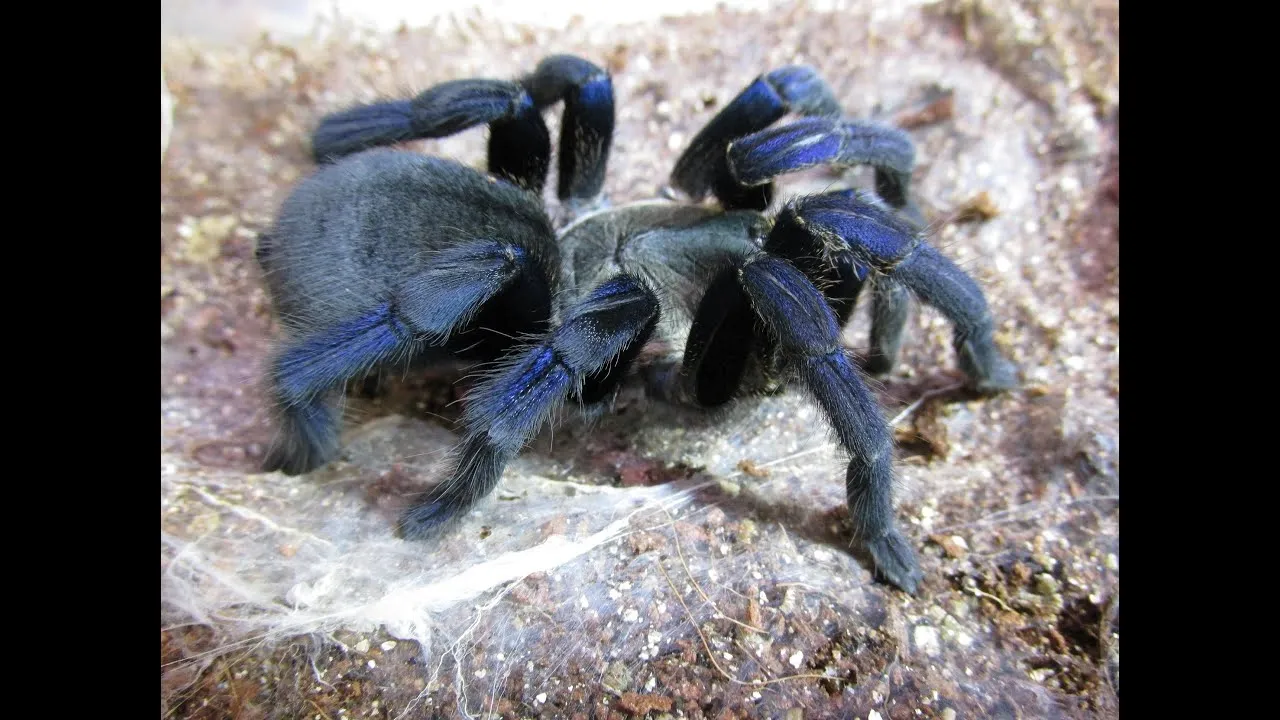
The frequency of feeding also has an impact on your tarantula’s health. Overfeeding can lead to obesity and other health issues. Underfeeding can cause nutritional deficiencies. Adjust the feeding schedule according to the tarantula’s age, size, and appetite. Young tarantulas might need to be fed every other day. Adults could be fed once or twice a week. Observe the tarantula’s behavior and body condition to monitor their nutritional intake. Regular observation and adjustments will ensure your Cobalt Blue Tarantula receives the right amount of food. Always remove any uneaten food items within 24 hours to maintain a clean enclosure and prevent stress.
Water and Hydration (H2)
Providing fresh water is as crucial as offering the right food. Cobalt Blue Tarantulas need access to clean water for hydration. Water plays a key role in their overall health and well-being. Adequate hydration supports bodily functions and aids in molting. The provision of water should be a non-negotiable component of their care. Ensure that you maintain and monitor the water source regularly. Clean, fresh water ensures their health and supports their vibrant, colorful appearance.
Essential Water for Cobalt Blues
A shallow water dish, or a water source, must be available at all times. Cobalt Blue Tarantulas primarily drink from a shallow water dish. The water dish should be appropriately sized to prevent the tarantula from drowning. Make sure to provide a stable, non-tipping dish in their habitat. Ensure fresh, clean water daily. Regular monitoring is necessary to make sure the water is clean and easily accessible. Consider using a water gel in addition to the water dish, to provide supplemental hydration, especially during molting. Hydration is vital to the tarantula’s overall health and survival.
Maintaining Water Quality
Maintain water quality by regularly cleaning the water dish. Replace the water daily to prevent bacteria growth. Using distilled or dechlorinated water is recommended. A clean water source ensures the tarantula stays hydrated and healthy. Regularly check the water dish for any debris or contaminants. Position the water dish to avoid contamination. Make sure the water is always fresh, to support the tarantula’s overall well-being. Proper water maintenance helps to create a healthy environment for your Cobalt Blue Tarantula and is vital for the health of your pet.
Conclusion (H2)
Providing the right food and ensuring adequate hydration are essential components of caring for a Cobalt Blue Tarantula. By carefully selecting the feeders and understanding their nutritional values, you can ensure your tarantula thrives. Always prioritize a varied diet that includes crickets, roaches, and occasionally, mealworms, superworms, and hornworms. Remember to adjust the food choices based on the tarantula’s size, age, and activity level. Regularly monitor the water source and maintain its cleanliness. Following these recommendations will greatly contribute to the health, longevity, and vibrant display of your Cobalt Blue Tarantula. Happy tarantula keeping!
